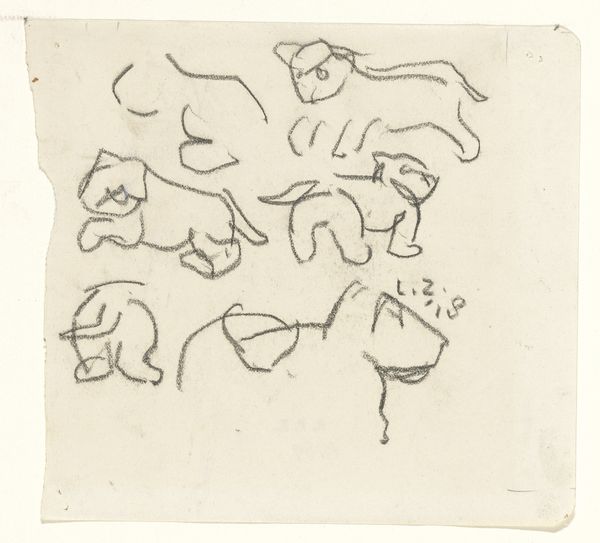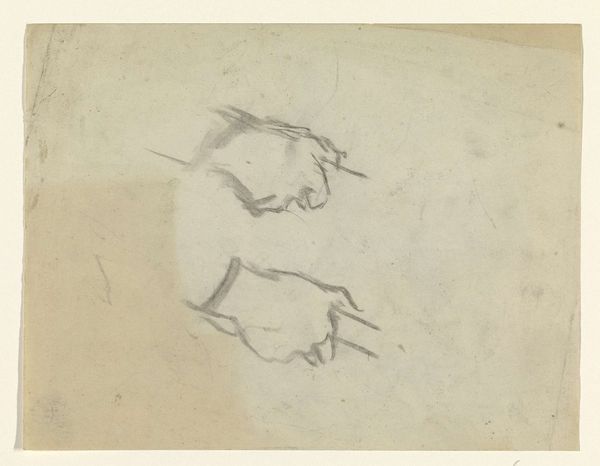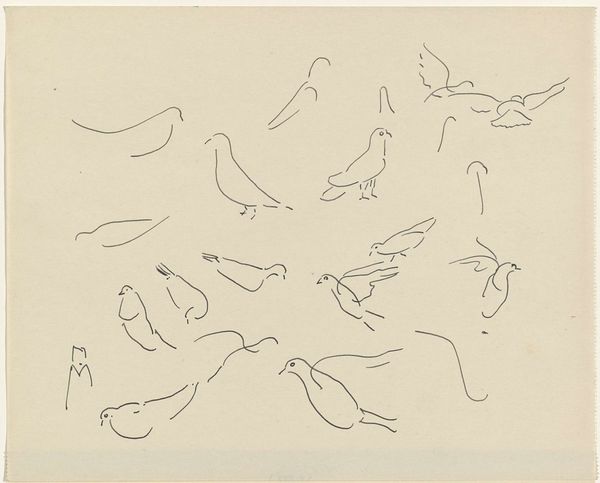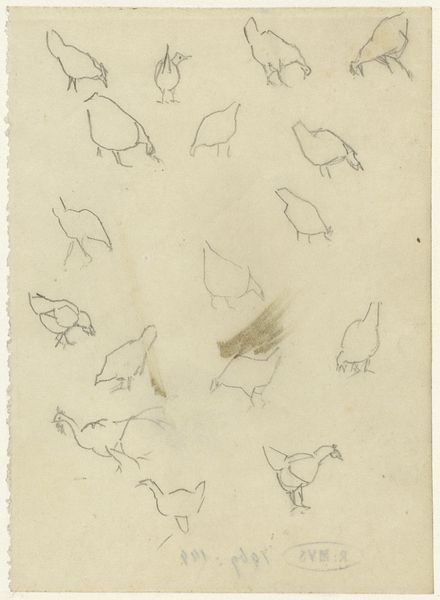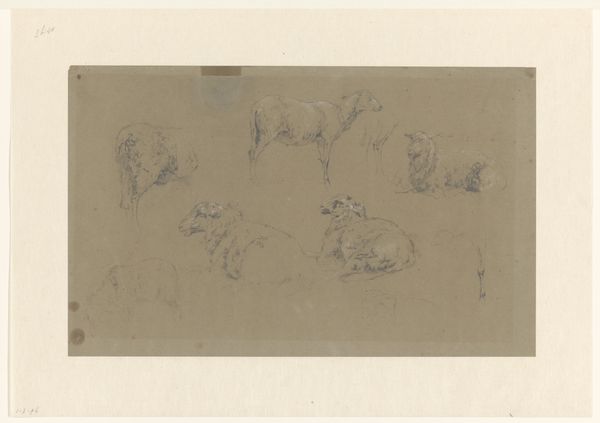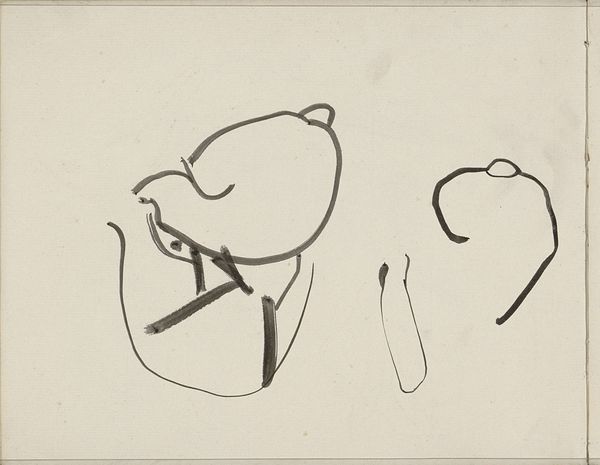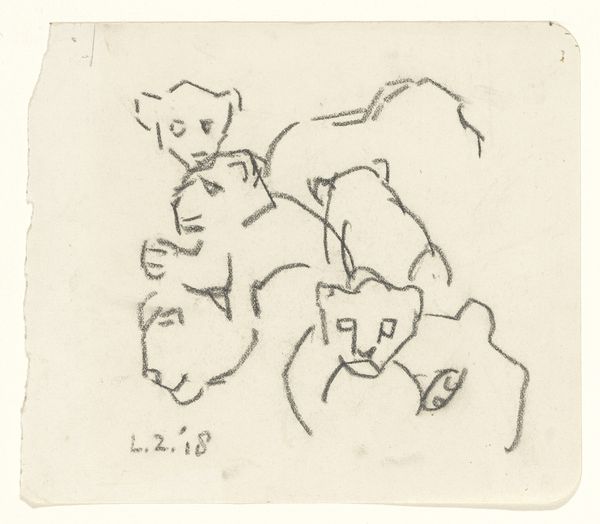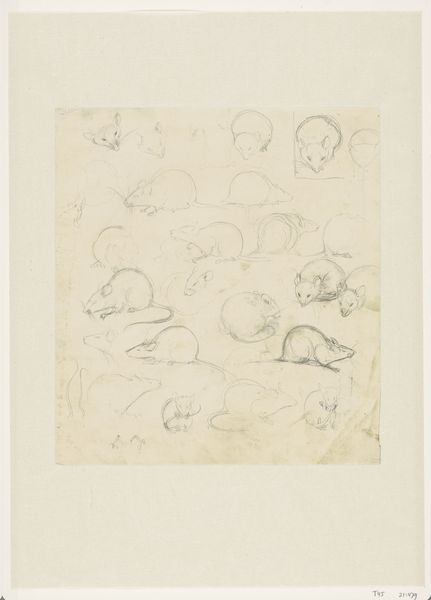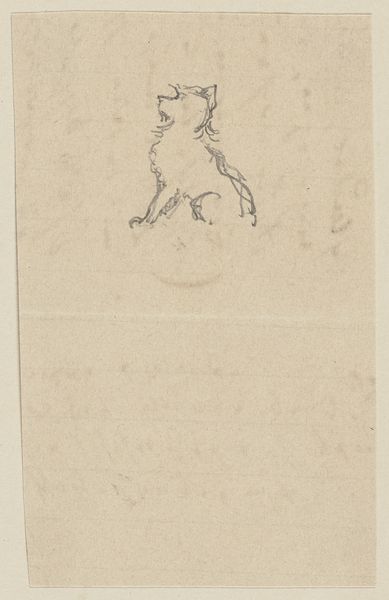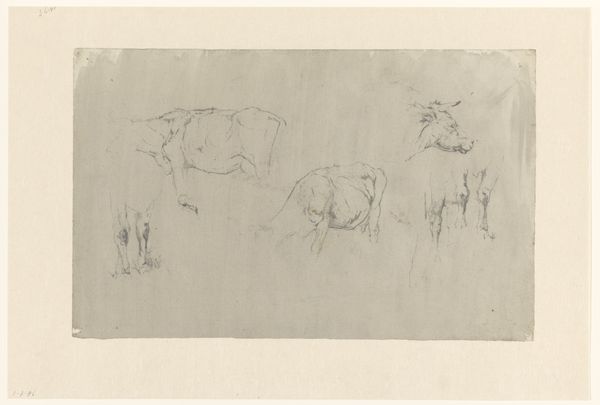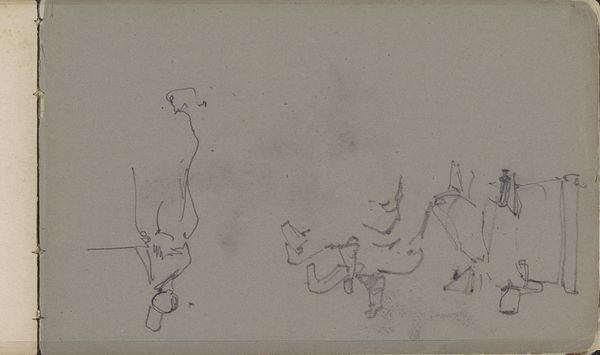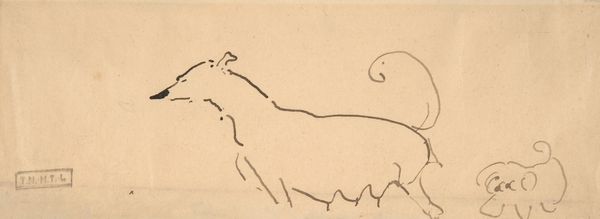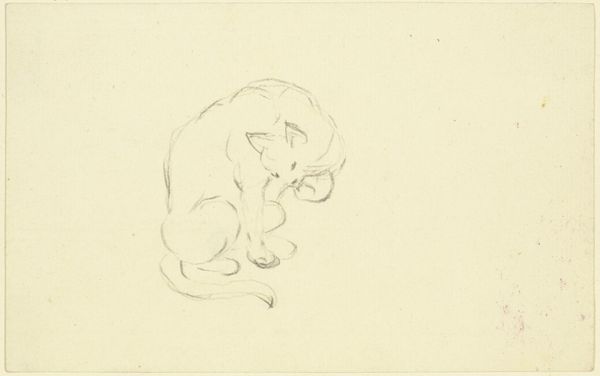
drawing, pencil
#
drawing
#
comic strip sketch
#
animal
#
old engraving style
#
cartoon sketch
#
figuration
#
personal sketchbook
#
idea generation sketch
#
sketchwork
#
ink drawing experimentation
#
sketch
#
pencil
#
sketchbook drawing
#
storyboard and sketchbook work
#
sketchbook art
Dimensions: height 139 mm, width 150 mm
Copyright: Rijks Museum: Open Domain
Curator: At first glance, the sketch seems so unassuming. It’s almost easy to pass by without realizing you're in the presence of artistic possibility. Editor: Yes, there's an unpretentious quality to it that's quite refreshing. "Schetsen van een leeuwtje," or "Sketches of a Little Lion," from 1918, a work on paper, offers a raw glimpse into the artist's creative process. But there is also this profound sense of capturing something untamed, wild in its natural, almost instinctual line work. Curator: Indeed. What I find intriguing is how Lambertus Zijl distilled the very essence of "lion-ness" using a mere handful of lines, so gestural, but recognizable. The image contains these shorthand symbolic depictions. For millennia, lions in art symbolize strength, courage, pride… kingship even. It's an entire history loaded into each one. Editor: Precisely. Given that 1918 was a pivotal moment – the tail end of World War One, massive shifts in the socio-political order – a creature representing strength could be laden with far more subversive ideas. Here, we see that powerful creature rendered small. It begs a question: strength in what context, for whom? Who benefits? What does a figure like a Lion in 1918 represent in an exhausted and fractured world? Curator: The sketch becomes more than an exercise in form but an interrogation of power structures and inherited symbols. What did strength even mean anymore, as you’re suggesting? Consider the symbolism around idealized kings – had they become an obsolete structure? Editor: Yes. Moreover, how does Zijl employ that artistic tradition to respond to a world in tatters? By sketching the animal, maybe Zijl wanted to rethink established societal systems…perhaps using the playful freedom that is inherent in this sketch-like form to test an artistic possibility that might usher a future free of rigid norms? Curator: It does open up new ways to look at artmaking, too, particularly sketch work as experimentation. Editor: It reminds us that art is always embedded in broader struggles of society – particularly when it questions long-held truths. Curator: A fascinating reinterpretation. Editor: Thanks to your sharp eye, I feel differently about sketches now.
Comments
No comments
Be the first to comment and join the conversation on the ultimate creative platform.
